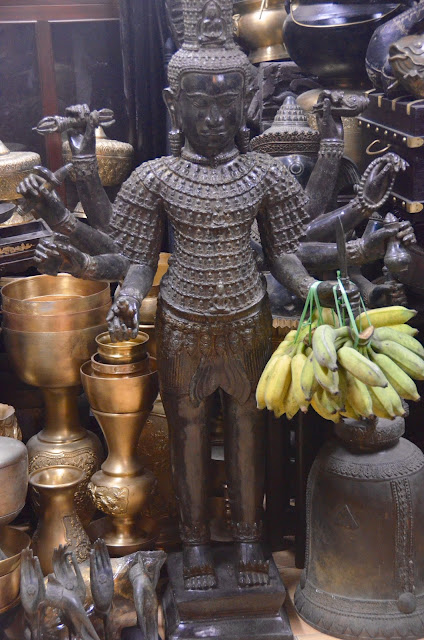Consequently, my expectations were rather low but it was surprising to see that despite the traumatic past, Cambodia is moving forward.
We spent first four days on the coast, in a beautiful little village called Kep. It was a perfect place to slow down, binge read and do small trips.
The area is known for pepper, so we visited a pepper farm. I had no idea that it takes nine months to grow a pepper, that peppers grow on trees or that white peppers are actually black peppers without a "jacket".
I was most fascinated by the fertilizer the organic farm used: the pepper trees get their power from bat poop. Large caves in the vicinity have created a flourishing bat excrement business for the locals who collect the valuables.
Kep has a famous beach where locals spend long hours in hammocks, eating and dousing. Unfortunately, it seems to be a tradition to throw rubbish in the streets.
Crabs are the most important source of income for the coastal society.
The crab market in Kep offered a little insight in the hard work of crab catching, sea food and vegetables.
Phnom Penh was a mix of tragic history, beautiful parks, temples and modern life.
Since I love walking, I dragged my poor husband around the city - in scorching heat.
After about 15 kilometers along the Mekong River, temples, the Royal Palace, small streets and big streets, markets and stores, my husband just wanted to find a chair at the National Museum.
Phnom Penh is really not a city for walking, even I admit it.
Subsequently, we found our own tuk-tuk man, a very good driver who knew every single short-cut in the city. We paid him well, and he took good care of us for three days.
The toughest, yet the most memorable place was Cheung Ek, a killing field and mass grave some 10 kilometers from the city center.
Approximately 17 000 men, women and children were transported to the place, killed brutally and thrown in mass graves. Thousands of skulls are piled at a memorial.
This killing field was just one of many others.
We also visited the Genocide Museum, a former high school, where up to 20 000 people were tortured and finally transported to the Killing Fields.




















No comments:
Post a Comment